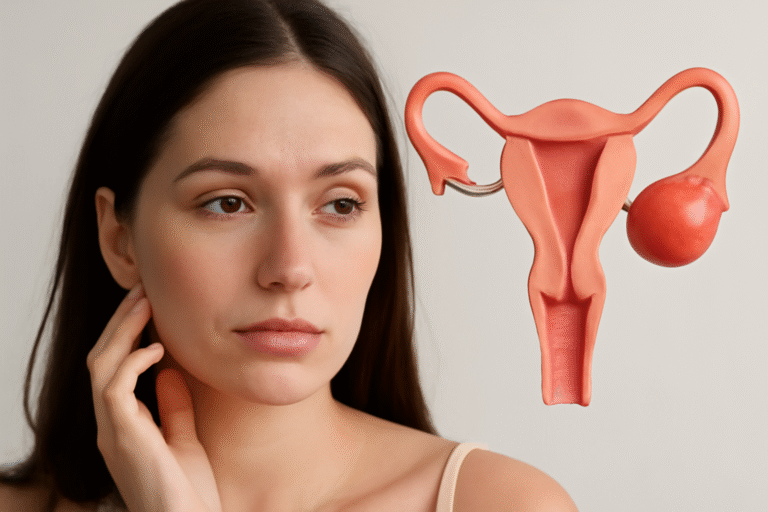Introduction
If you’re trying to conceive, understanding your fertility window is key to increasing your chances of pregnancy. Many couples struggle simply because they aren’t timing intercourse correctly. In this guide, we’ll break down everything you need to know about the fertility window, ovulation, and how to track your most fertile days.
Also read: How to Prevent and Treat Food Poisoning While Pregnant
What is the Fertility Window?
The fertility window refers to the days in a woman’s menstrual cycle when conception is most likely to occur. This period typically includes the five days leading up to ovulation, the day of ovulation, and the day after. Knowing this window allows couples to plan intercourse for the best chance of pregnancy.

The Science Behind Ovulation and Fertility
What Happens During Ovulation?
Ovulation is the process where a mature egg is released from the ovary, ready for fertilization. This typically happens around day 14 of a 28-day cycle, but the exact timing can vary. After release, the egg travels down the fallopian tube, where it may meet sperm for fertilization.
The Role of Hormones in Fertility
Hormones such as estrogen and luteinizing hormone (LH) play critical roles in preparing the body for ovulation. LH triggers the release of the egg, while estrogen helps thicken the uterine lining, making it receptive for a fertilized egg.
How Long is the Fertility Window?
The Life Span of an Egg
Once released, an egg remains viable for about 12-24 hours. If it is not fertilized within this time, it disintegrates and is absorbed by the body.
The Life Span of Sperm
Sperm can survive in the female reproductive tract for up to five days, making the days leading up to ovulation just as important as the day of ovulation itself. Healthy sperm can wait for the egg in the fallopian tube, increasing the chances of conception.
Signs of Ovulation to Track Your Fertility Window
Changes in Basal Body Temperature (BBT)
A slight increase in BBT (about 0.5 to 1 degree Fahrenheit) after ovulation can indicate that ovulation has occurred. Tracking this temperature over several months can help predict future ovulation.
Cervical Mucus Changes
During the fertile window, cervical mucus becomes clear, stretchy, and slippery (like raw egg whites). This texture helps sperm travel more easily toward the egg.
Ovulation Pain (Mittelschmerz)
Some women experience mild cramping or sharp pain on one side of the lower abdomen when ovulation occurs. This can be a useful sign to time intercourse.
Increased Libido and Other Physical Signs
A higher sex drive, tender breasts, bloating, and a heightened sense of smell can indicate ovulation is approaching.
Methods to Track Your Fertility Window
Calendar Method
Tracking cycles manually helps predict ovulation based on past menstrual patterns. However, it is less reliable for women with irregular cycles.
Ovulation Predictor Kits (OPKs)
These test urine for an LH surge, which happens 24-36 hours before ovulation, making them a useful tool for pinpointing fertility windows.
Fertility Apps
Apps like Clue and Flo use data on cycle length, BBT, and other symptoms to predict ovulation days and help track fertility windows.
Ultrasound and Blood Tests
Doctors can use ultrasound to observe follicle development and blood tests to measure hormone levels, offering the most precise ovulation tracking.
Factors That Affect the Fertility Window
Age and Fertility
Fertility declines with age, especially after 35, as egg quality and quantity decrease.
Lifestyle and Diet
Eating a nutrient-rich diet, exercising regularly, and avoiding processed foods support reproductive health.
Stress and Mental Health
Chronic stress can disrupt ovulation and menstrual cycles. Practicing relaxation techniques like yoga and meditation can help regulate cycles.
Best Practices to Maximize Conception Chances
Timing Intercourse Right
Having sex every 1-2 days during the fertile window ensures sperm is available when the egg is released.
Maintaining a Healthy Lifestyle
Avoiding smoking, limiting alcohol, staying hydrated, and getting adequate sleep improve fertility.
Supplements for Fertility
Folic acid, vitamin D, zinc, and CoQ10 can boost fertility and improve egg and sperm health.
Common Myths About Fertility and Ovulation
- You can only get pregnant on ovulation day – False! Sperm can survive for days before ovulation.
- Stress doesn’t affect fertility – It does! High stress can delay ovulation.
- Certain positions improve conception chances – There’s no scientific evidence for this.
When to Seek Medical Help
Signs of Infertility
If you’ve been trying for over a year (or six months if over 35) without success, consult a doctor.
Fertility Treatments Available
Options include ovulation-inducing medications, intrauterine insemination (IUI), and in-vitro fertilization (IVF).
Conclusion
Understanding your fertility window can significantly improve your chances of conceiving. Tracking ovulation, maintaining a healthy lifestyle, and seeking medical help when needed can all contribute to a successful pregnancy journey.
FAQs
1. Can I get pregnant outside my fertility window?
While it’s less likely, there is still a small chance, especially if ovulation occurs earlier or later than expected.
2. What if my cycles are irregular?
Tracking ovulation may be more challenging. Using OPKs, tracking BBT, and consulting a doctor can help.
3. Does having sex every day increase pregnancy chances?
Not necessarily. Every 1-2 days during the fertile window is sufficient.
4. How long should I track before trying to conceive?
Tracking for at least 3-6 months can provide a clear picture of ovulation patterns.
5. When should I seek medical help?
If you’ve been trying for over a year (or six months if over 35) without success, consult a fertility specialist.





[…] Also read: Fertility Window: Optimal Time to Conceive & Effective Tracking Methods […]
[…] Also Read: Best Time For Conception […]
[…] timing can be overwhelming. What if you had a clear biological signal that indicated your most fertile days? This signal exists; it is called the luteinizing hormone (LH) surge. Understanding this important […]